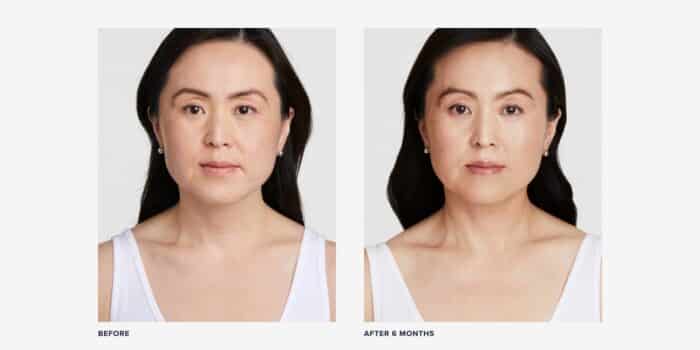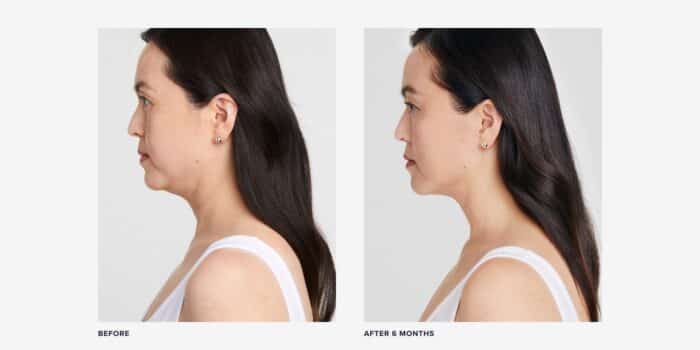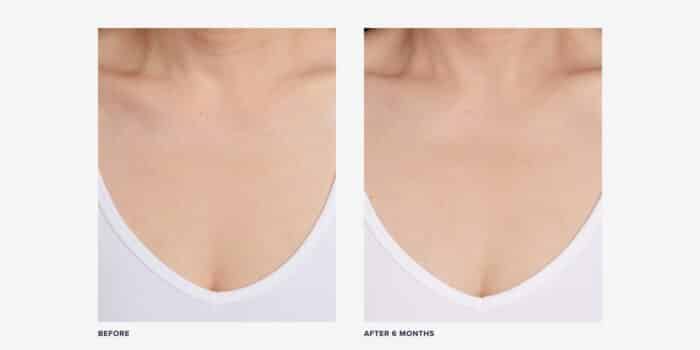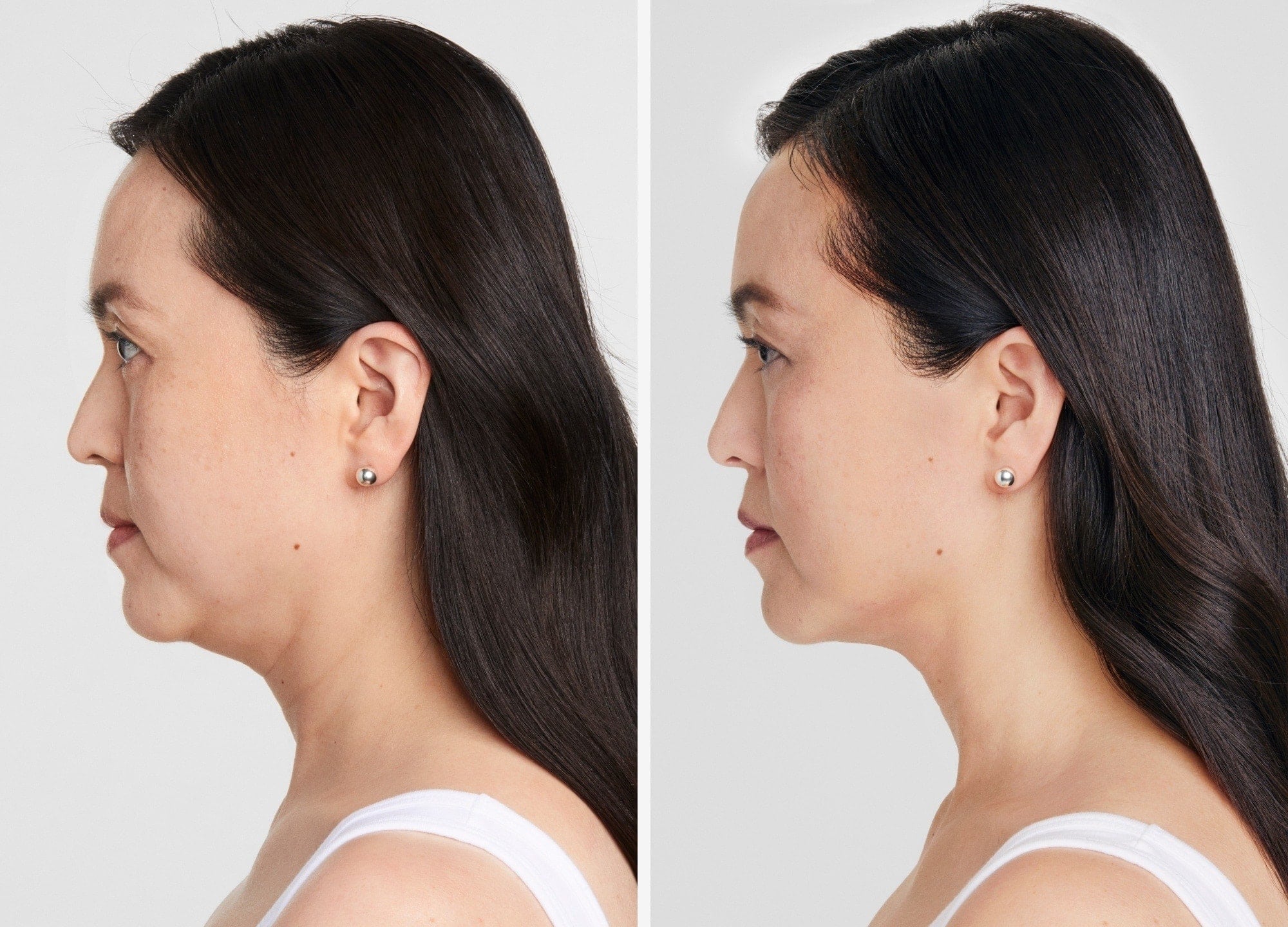Grace is a 46-year-old woman living on Long Island, New York, who received an Ultherapy treatment in 2021. This is her story, as told to Megan McIntyre, edited for length and clarity.
I’ve always been someone who was very low maintenance with my skin. Before I had my children, I didn’t do much; it’s only in the past five years or so that I’ve really explored more treatment products, like serums, for minimizing lines and pores. Growing up, I had very oily skin that was acne-prone, but as I’ve gotten older, my skin has gotten drier and I’m dealing with fine lines and wrinkles.
I go to the dermatologist for my yearly skin checks, but I’ve never done any cosmetic treatments. I would just get a facial every five years or so. But my fine lines are getting more pronounced, and I knew it was time to explore options that would be more effective.
Ultherapy wasn’t on my radar, but the concept of using ultrasound appealed to me. I’m a retired ER physician, and so I did my research, including on RealSelf, on how Ultherapy works.
I wasn’t ready to try injectables and I didn’t want any incisions in my face, so what I liked about Ultherapy is that it’s truly noninvasive. It lifts and smooths skin on the face, neck, and décolletage by delivering microfocused ultrasound underneath the skin. This helps encourage collagen production and create a tightening effect. With three different treatment depths, Ultherapy is precise and can be tailored to each patient’s skin in order to get the best results.
My research also showed Ultherapy had no downtime, which was important to me. I also found that Ultherapy results are long lasting and I would need just one treatment to get results that would last a year or more.
Dr. Kim Nichols [a board-certified dermatologist in Greenwich, Connecticut] performed my treatment. I felt confident having her do my treatment because she is a highly qualified doctor, and she made me feel comfortable about Ultherapy’s safety record. I arrived at her office early in the morning and filled out the pre-procedure prep questionnaire and medical paperwork. The nurse took “before” pictures of the areas we were treating—my chin, brow, neck, and chest—and then asked me if I wanted numbing cream. I found out later that most people prefer to do the treatment with numbing cream because it can be uncomfortable, but I didn’t think I’d need it. I thought, “Oh, it’s ultrasound, I don’t need numbing!” That was silly of me, because there is definitely some discomfort.
Before starting, Dr. Nichols explained to me how the Ultherapy treatment would work and showed me the monitor that would allow her to see how deep the ultrasound energy was going into my skin layers. This allowed her to be precise with the applicator and make sure she was delivering the right amount of energy to the right areas. She applied a conductive gel to the areas she’d be treating, then placed the applicator on my skin.
The treatment lasted about an hour. It felt like a burst of constant heat that stayed until the applicator was removed. I was OK with the sensation until we got toward the end of the treatment—that’s when I really regretted not having the numbing cream. Later, I spoke with other people who’d used numbing cream before their treatment and they said that they didn’t experience the same discomfort as I did, so I know now I should have said yes. Fortunately, the pain was brief and went away immediately after the applicator was removed.
After the treatment was over, the nurse wiped off the remaining gel and I was able to leave and go about my day. There was no residual pain, which was very weird to me—to have a procedure that heats up your skin like that and doesn’t leave you feeling achy was a nice surprise.
While I didn’t have any puffiness or redness, I did have two or three of what Dr. Nichols called “cat lines”—little red welts that looked like a cat scratch—on some of the areas on my neck, but those weren’t too noticeable and went away after a few days.


After my Ultherapy treatment, I followed my usual skin-care routine and made sure to wear plenty of sunscreen. I was asked to come back and take “after” photos at the one-month, three-month, and six-month mark. One thing I did notice, right at that one-month photo session, was my neck area. I’d never really paid attention to the lines on my neck before, but after seeing my photos and how deep they were before the treatment, I could tell that they had definitely smoothed out and were less noticeable. At the six-month mark, the lines around my eyes were smoother [as a result of the brow being lifted] and my face, in general, just felt firmer and tighter. The photos were really helpful in showing me just how effective the treatment had been and how my results were progressively getting better. Dr. Nichols told me they could keep improving up to a year afterward.

I knew it wasn’t going to be a drastic, overnight change, but it kept my wrinkles from getting any worse while also smoothing out some of those signs of aging. If you’re looking for facelift-like results though, this isn’t for you. If you want subtle lifting and anti-aging maintenance in a noninvasive treatment, Ultherapy can give you that.
It’s been almost a year since my treatment, and I’m very happy with my results—it’s exactly what I wanted. I barely wear makeup anymore and I feel like that’s a good thing. People I haven’t seen in a while have told me that my skin looks great, so I feel like Ultherapy was definitely worth it—and I would recommend it. For safety information, visit ultherapy.com/IFU.











